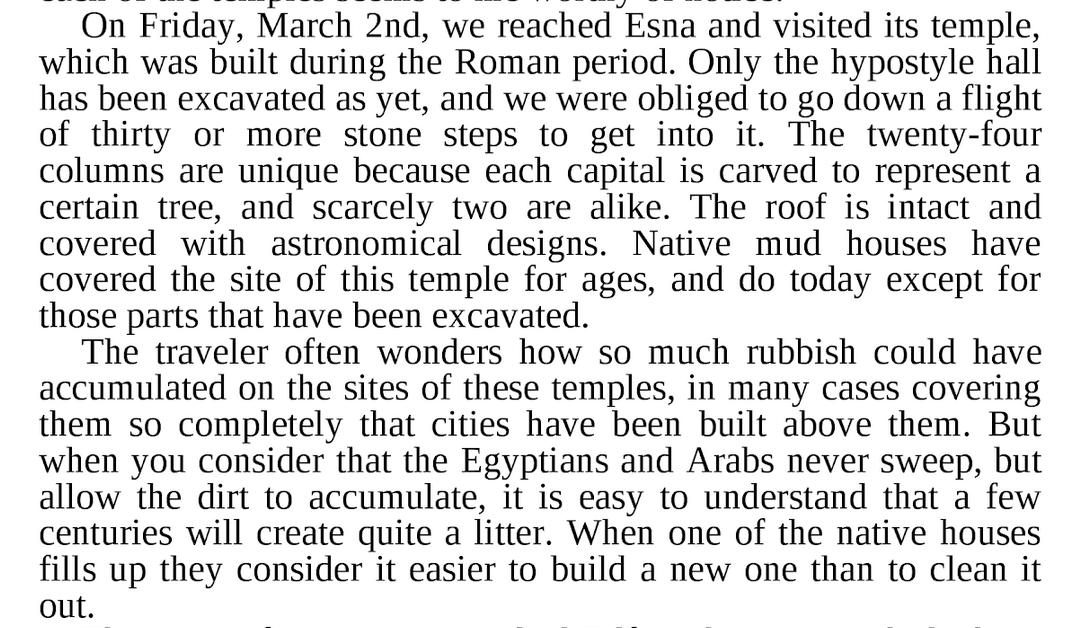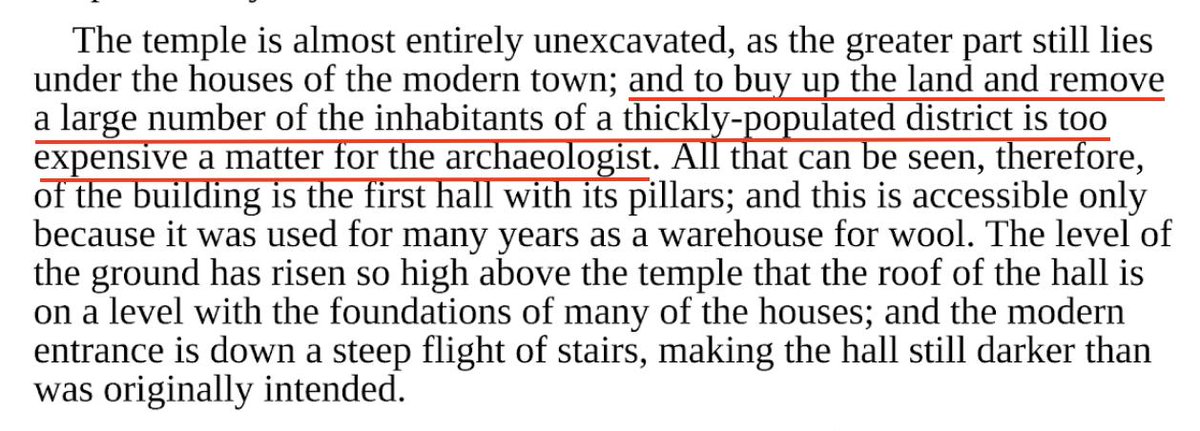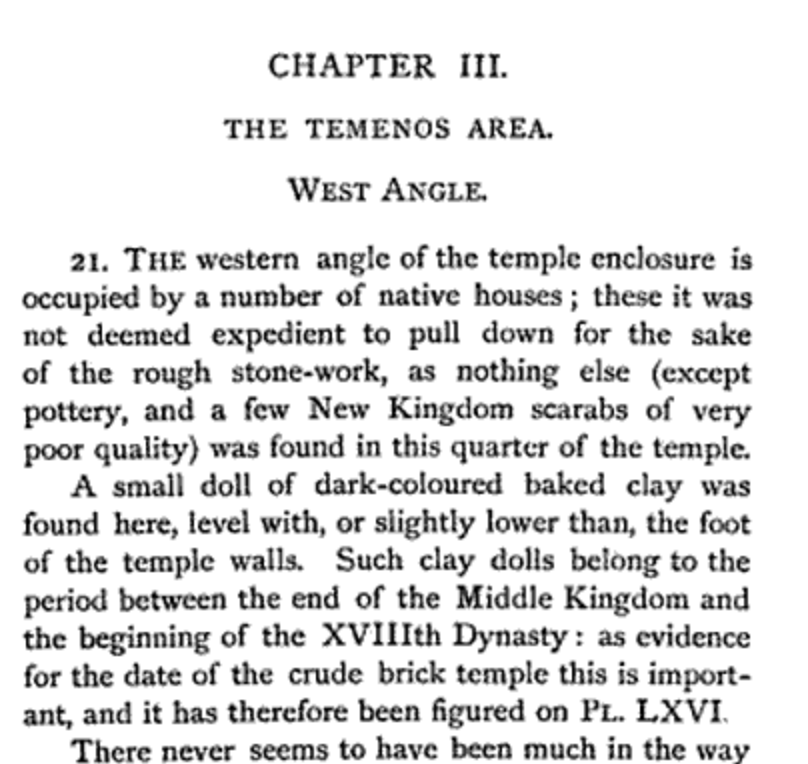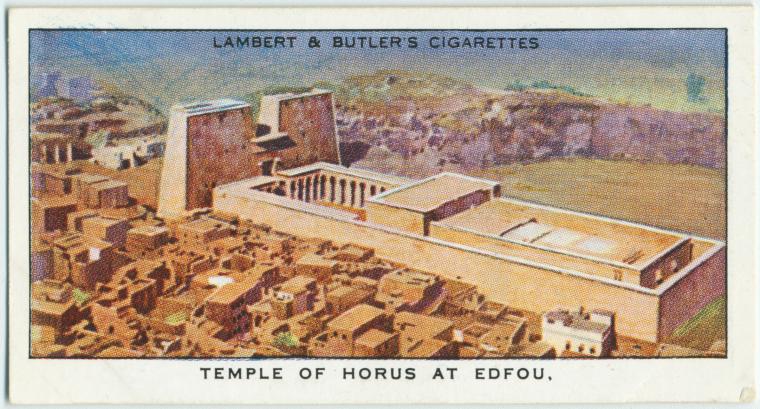For #WorldHeritageDay, a thread on the houses on top of the Temple of Edfu
Inspired by @malfy_c, I decided to find out what happened to them.
(Image from Description de l& #39;Égypte, vol. 1 Planches : Antiquités, 1809)
https://digitalcollections.nypl.org/items/510d47e0-0f5a-a3d9-e040-e00a18064a99">https://digitalcollections.nypl.org/items/510...
Inspired by @malfy_c, I decided to find out what happened to them.
(Image from Description de l& #39;Égypte, vol. 1 Planches : Antiquités, 1809)
https://digitalcollections.nypl.org/items/510d47e0-0f5a-a3d9-e040-e00a18064a99">https://digitalcollections.nypl.org/items/510...
In the Hellenstic and Roman periods Edfu was Apollinopolis Magna, and a magnificent Temple of Horus (identified with Apollo) was built there.
(photo of the temple pylon, 2009, by timsdad via Wikimedia Commons)
https://commons.wikimedia.org/wiki/File:Temple_of_Edfu.jpg">https://commons.wikimedia.org/wiki/File...
(photo of the temple pylon, 2009, by timsdad via Wikimedia Commons)
https://commons.wikimedia.org/wiki/File:Temple_of_Edfu.jpg">https://commons.wikimedia.org/wiki/File...
What& #39;s not clear from most photos of the temple is that it is actually within (more precisely, as the edge of) the modern city of Edfu.
Here& #39;s a wonderful aerial photo of the city and the temple from 1936.
(Matson Photo Service via Library of Congress)
http://www.loc.gov/pictures/item/mpc2010002755/PP/">https://www.loc.gov/pictures/...
Here& #39;s a wonderful aerial photo of the city and the temple from 1936.
(Matson Photo Service via Library of Congress)
http://www.loc.gov/pictures/item/mpc2010002755/PP/">https://www.loc.gov/pictures/...
The mudbrick houses of Edfu surrounding the Temple of Horus are there in the earliest images of the site, too.
From Description de l& #39;Égypte, the record of Napoleon& #39;s expedition (Volume I - Planches : Antiquités, published 1809)
https://digitalcollections.nypl.org/items/510d47e0-0f59-a3d9-e040-e00a18064a99">https://digitalcollections.nypl.org/items/510...
From Description de l& #39;Égypte, the record of Napoleon& #39;s expedition (Volume I - Planches : Antiquités, published 1809)
https://digitalcollections.nypl.org/items/510d47e0-0f59-a3d9-e040-e00a18064a99">https://digitalcollections.nypl.org/items/510...
The earliest image I& #39;ve found -- an 18th century drawing from Fredrik Ludwig Norden -- shows mudbrick houses not only around the temple but *on the roof of the hypostyle hall* (the opposite end of the temple from the pylon).
https://digitalcollections.nypl.org/items/510d47d9-65ed-a3d9-e040-e00a18064a99">https://digitalcollections.nypl.org/items/510...
https://digitalcollections.nypl.org/items/510d47d9-65ed-a3d9-e040-e00a18064a99">https://digitalcollections.nypl.org/items/510...
Norden visited in 1737, describing the "magnificent antiquities, which the present-day Arabs have converted to dovecotes"
(The Antiquities, Natural History, Ruins and Other Curiosities of Egypt, Nubia and Thebes, 1780; detail of temple)
(The Antiquities, Natural History, Ruins and Other Curiosities of Egypt, Nubia and Thebes, 1780; detail of temple)
Vivant Denon, a member of Napoleon& #39;s expedition, showed mudbrick houses in the interior of the Temple of Horus . . .
(Voyage dans la Basse et la Haute Egypte, 1829; drawn by Denon, engraved by Louis-Pierre Baltard)
https://digitalcollections.nypl.org/items/510d47d9-6304-a3d9-e040-e00a18064a99">https://digitalcollections.nypl.org/items/510...
(Voyage dans la Basse et la Haute Egypte, 1829; drawn by Denon, engraved by Louis-Pierre Baltard)
https://digitalcollections.nypl.org/items/510d47d9-6304-a3d9-e040-e00a18064a99">https://digitalcollections.nypl.org/items/510...
. . . and of course on top
(Voyage dans la Basse et la Haute Egypte, 1829; drawn by Denon, engraved by Louis-Pierre Baltard)
https://digitalcollections.nypl.org/items/510d47d9-6305-a3d9-e040-e00a18064a99">https://digitalcollections.nypl.org/items/510...
(Voyage dans la Basse et la Haute Egypte, 1829; drawn by Denon, engraved by Louis-Pierre Baltard)
https://digitalcollections.nypl.org/items/510d47d9-6305-a3d9-e040-e00a18064a99">https://digitalcollections.nypl.org/items/510...
Scottish artist David Roberts visited Edfu in 1838, and showed houses on top of the hypostyle hall . . . and in front of the pylon. (lithograph by Louis Haghe; from The Holy Land, Syria, Idumea, Arabia, Egypt & Nubia, 1842-49)
https://digitalcollections.nypl.org/items/510d47d9-63bc-a3d9-e040-e00a18064a99">https://digitalcollections.nypl.org/items/510...
https://digitalcollections.nypl.org/items/510d47d9-63bc-a3d9-e040-e00a18064a99">https://digitalcollections.nypl.org/items/510...
The earliest photographs I& #39;ve found are by Félix Teynard, c. 1851. They still show houses around the temple . . .
http://www.loc.gov/pictures/item/2001695318/">https://www.loc.gov/pictures/...
http://www.loc.gov/pictures/item/2001695318/">https://www.loc.gov/pictures/...
. . . and on top of the hypostyle hall
http://www.loc.gov/pictures/item/2001695319/
(Teynard,">https://www.loc.gov/pictures/... c. 1851)
http://www.loc.gov/pictures/item/2001695319/
(Teynard,">https://www.loc.gov/pictures/... c. 1851)
Teynard also took a great shot of the modern town c. 1851, from the pylon of the temple
http://www.loc.gov/pictures/item/2001695320/">https://www.loc.gov/pictures/...
http://www.loc.gov/pictures/item/2001695320/">https://www.loc.gov/pictures/...
Francis Frith (c. 1857) with a by-now standard view of the temple (from the non-town side), showing houses on top of the hypostyle hall and apparently in front of the pylon
(From Frith, Egypt and Palestine; via Gallica/BnF)
https://gallica.bnf.fr/ark:/12148/btv1b8443065f/f21.item">https://gallica.bnf.fr/ark:/1214...
(From Frith, Egypt and Palestine; via Gallica/BnF)
https://gallica.bnf.fr/ark:/12148/btv1b8443065f/f21.item">https://gallica.bnf.fr/ark:/1214...
But then compare Frank Mason Good& #39;s photo from 1868-9.
Good& #39;s photo is unusual in that it clearly shows the modern town on the Nile (east) side of the temple -- most other photos of the ruins appear to have deliberately the town.
http://dla.library.upenn.edu/dla/holyland/image.html?id=HOLYLAND_lenkin_2449">https://dla.library.upenn.edu/dla/holyl...
Good& #39;s photo is unusual in that it clearly shows the modern town on the Nile (east) side of the temple -- most other photos of the ruins appear to have deliberately the town.
http://dla.library.upenn.edu/dla/holyland/image.html?id=HOLYLAND_lenkin_2449">https://dla.library.upenn.edu/dla/holyl...
And now the houses on top of the hypostyle hall are clearly gone.
http://dla.library.upenn.edu/dla/holyland/image.html?id=HOLYLAND_lenkin_2449
(Good,">https://dla.library.upenn.edu/dla/holyl... 1868-9, detail)
http://dla.library.upenn.edu/dla/holyland/image.html?id=HOLYLAND_lenkin_2449
(Good,">https://dla.library.upenn.edu/dla/holyl... 1868-9, detail)
What happened?
The answer is apparently Auguste Mariette& #39;s excavations at the site in the early 1860s. Mariette cleared the temple and seems to have removed the houses from on top and inside of it in the process
(Mariette, The Monuments of Upper Egypt, 1877 [1872])
The answer is apparently Auguste Mariette& #39;s excavations at the site in the early 1860s. Mariette cleared the temple and seems to have removed the houses from on top and inside of it in the process
(Mariette, The Monuments of Upper Egypt, 1877 [1872])
That& #39;s all Mariette says; but Gaston Maspero gives more details, talking about more recent Antiquities Service removals -- or from Mariette& #39;s day??
(Maspero, Egypt: Ancient Sites and Modern Scenes, 1911 [written 1906])
(Maspero, Egypt: Ancient Sites and Modern Scenes, 1911 [written 1906])
Neither Mariette nor Maspero, nor anyone else at the time, seems to give much thought to the people whose houses were destroyed.
In fact, it& #39;s clear that -- as in other cases of modern towns at ancient Near Eastern sites -- the town and its people weren& #39;t viewed highly.
In fact, it& #39;s clear that -- as in other cases of modern towns at ancient Near Eastern sites -- the town and its people weren& #39;t viewed highly.
Gustave Flaubert visited Edfu in 1850 and described the scene:
"The village surrounds the gigantic temple and even climbed up on it in part . . .
The temple of Edfu serves as public latrines for the whole village."
https://fr.wikisource.org/wiki/Page:Flaubert_-_Notes_de_voyages,_I.djvu/210">https://fr.wikisource.org/wiki/Page...
"The village surrounds the gigantic temple and even climbed up on it in part . . .
The temple of Edfu serves as public latrines for the whole village."
https://fr.wikisource.org/wiki/Page:Flaubert_-_Notes_de_voyages,_I.djvu/210">https://fr.wikisource.org/wiki/Page...
Maspero *does* have something more to say about the villagers: he points out that the villagers (and their livestock) damaged the temple by living inside it, focusing on beliefs he claim led them to damage the stone (for protection).
(Maspero 1911)
(Maspero 1911)
Also: Mariette downplays the modern history of the site: he claims that "[a] few years ago, the modern village had invaded the temple . . ."
When in fact we see it there from Norden& #39;s trip in 1737, and others (like Maspero) insist it was in the temple for 1400 years.
When in fact we see it there from Norden& #39;s trip in 1737, and others (like Maspero) insist it was in the temple for 1400 years.
Other writers use typical words (like "wretched") to describe the houses that Mariette destroyed -- forming a contrast with the monumental architecture and justifying their removal.
(The New International Encyclopaedia, 2nd edition, vol. 7, 1918)
(The New International Encyclopaedia, 2nd edition, vol. 7, 1918)
More on the European and American attitudes toward villagers at these sites:
Maud Gage-Baum (wife of L. Frank Baum) describes nearby Esna in 1906:
"When one of the native houses fills up they consider it easier to build a new one than to clean it out."
https://books.google.com/books?id=rWwbAgAAQBAJ&pg=PT8532">https://books.google.com/books...
Maud Gage-Baum (wife of L. Frank Baum) describes nearby Esna in 1906:
"When one of the native houses fills up they consider it easier to build a new one than to clean it out."
https://books.google.com/books?id=rWwbAgAAQBAJ&pg=PT8532">https://books.google.com/books...
With such prevalent attitudes it& #39;s easy to see how removal of houses could be justified.
At Esna, Margaret Murray laments that archaeologists are too poor to buy up the land of the temple and remove all the people.
(Egyptian Temples, 1931)
At Esna, Margaret Murray laments that archaeologists are too poor to buy up the land of the temple and remove all the people.
(Egyptian Temples, 1931)
At nearby Hierakonpolis, Quibell and Green decided not to remove modern houses from the temple . . . because there weren& #39;t interesting enough finds in that part of the temple.
(Quibell and Green, Hierakonpolis part II, 1902)
(Quibell and Green, Hierakonpolis part II, 1902)
What would happen if excavators had felt differently about balancing excavating the past with the needs of present residents?
At Edfu, we might not have such picturesque views -- as on this cigarette card
https://digitalcollections.nypl.org/items/510d47e2-27b2-a3d9-e040-e00a18064a99">https://digitalcollections.nypl.org/items/510...
At Edfu, we might not have such picturesque views -- as on this cigarette card
https://digitalcollections.nypl.org/items/510d47e2-27b2-a3d9-e040-e00a18064a99">https://digitalcollections.nypl.org/items/510...

 Read on Twitter
Read on Twitter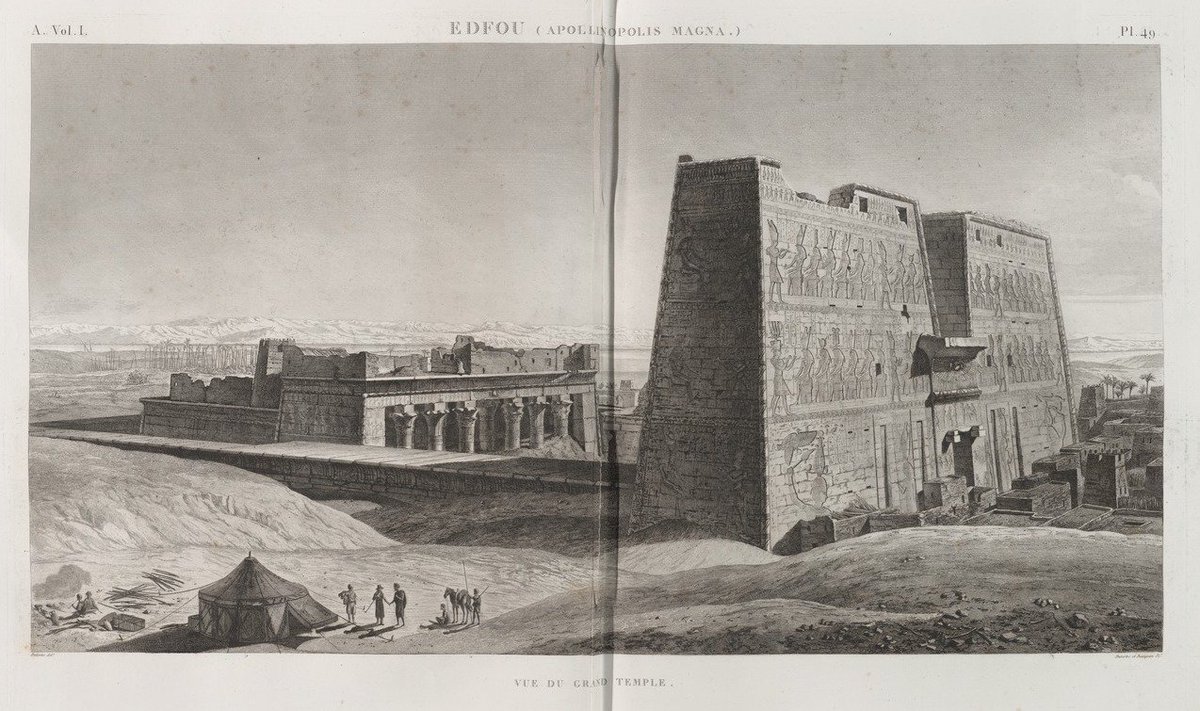
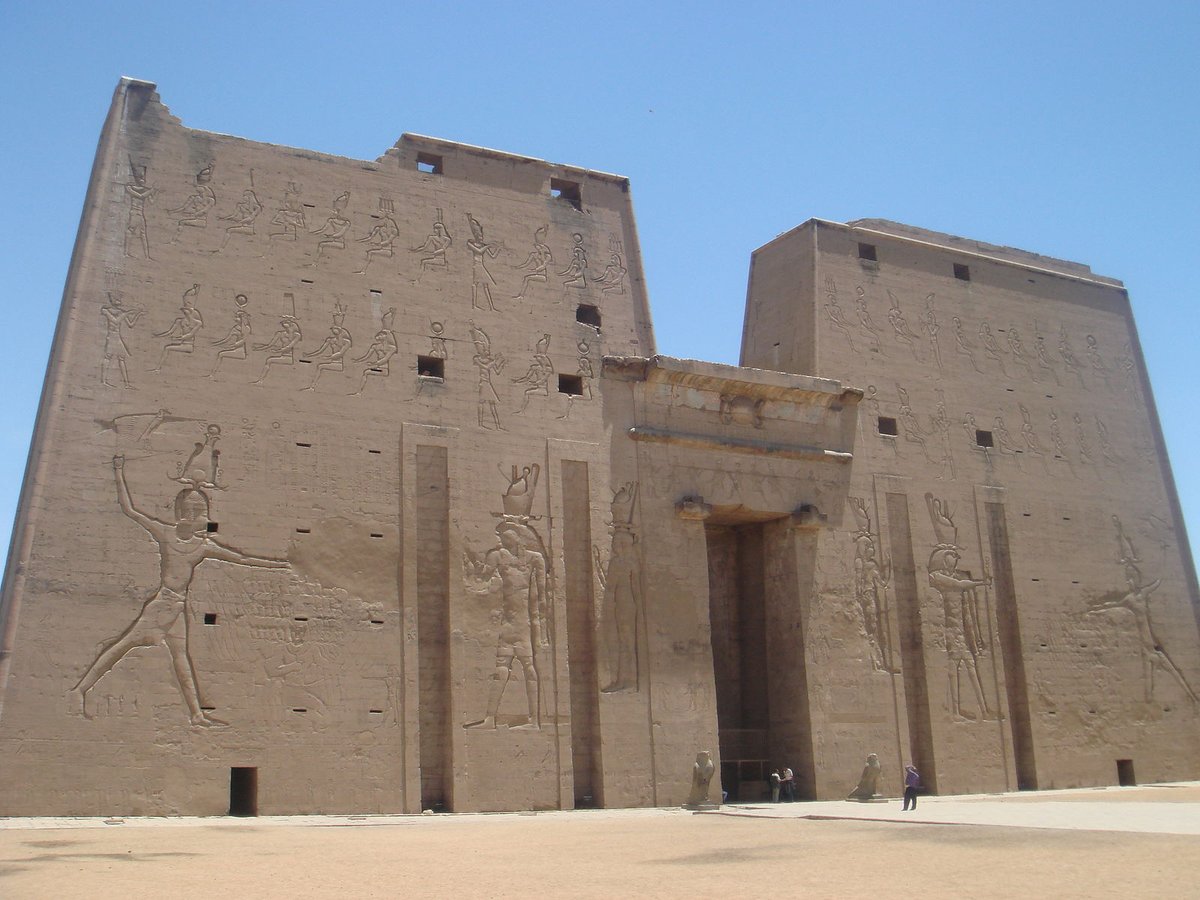
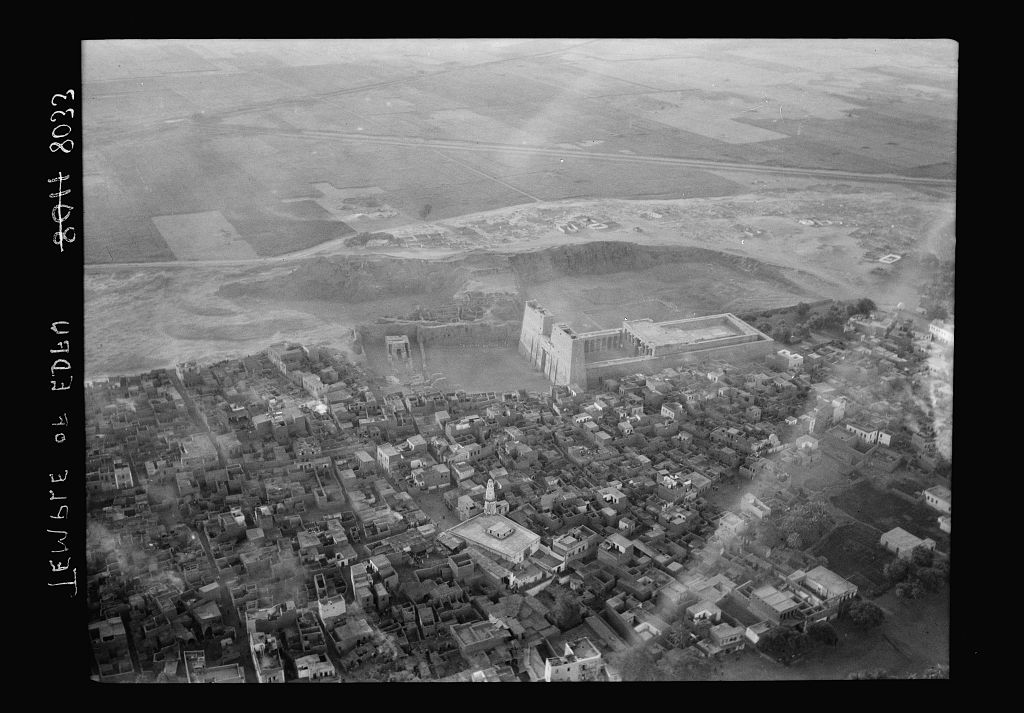
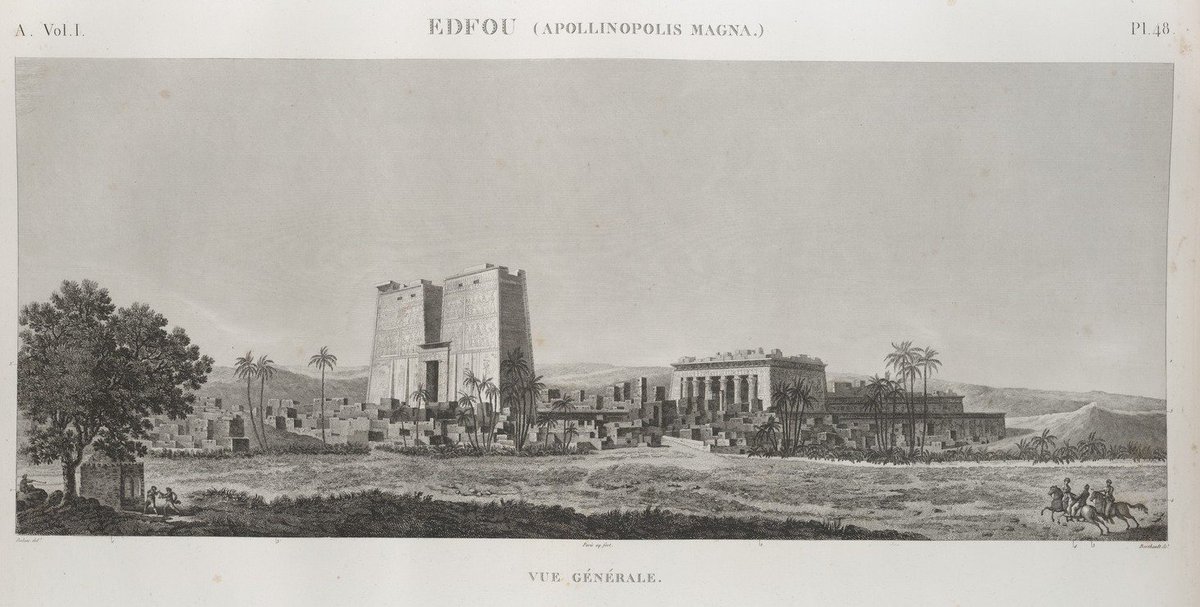
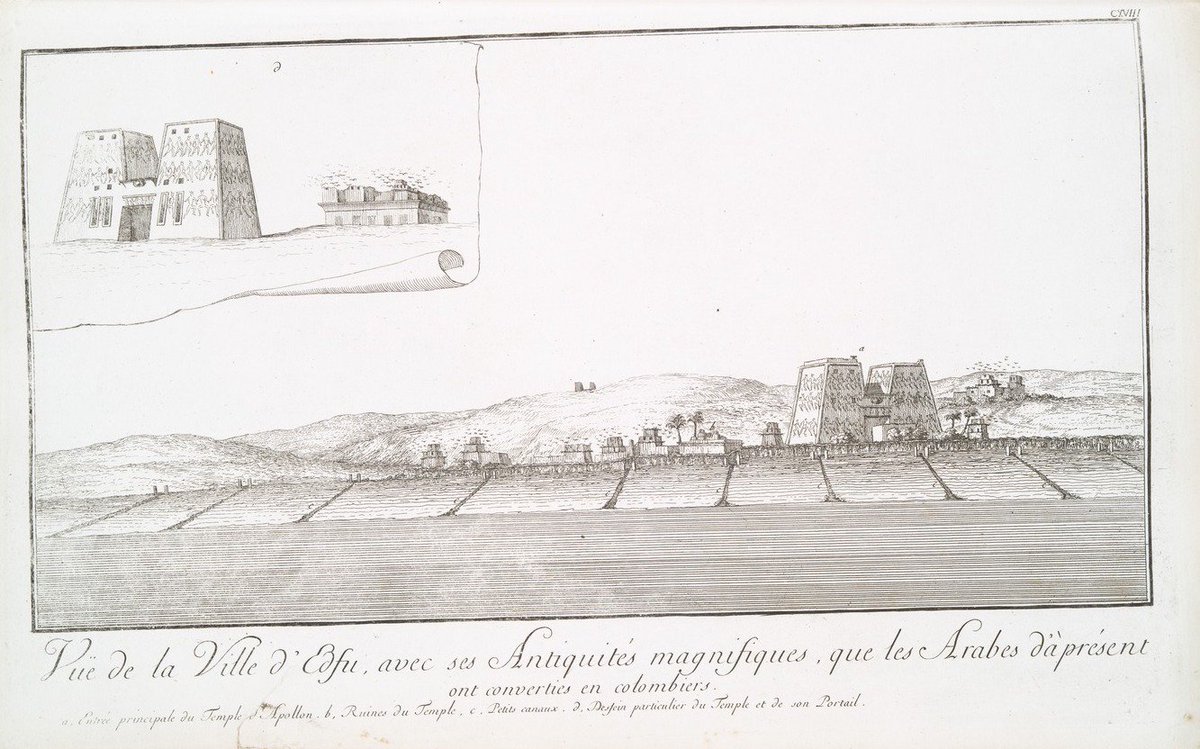
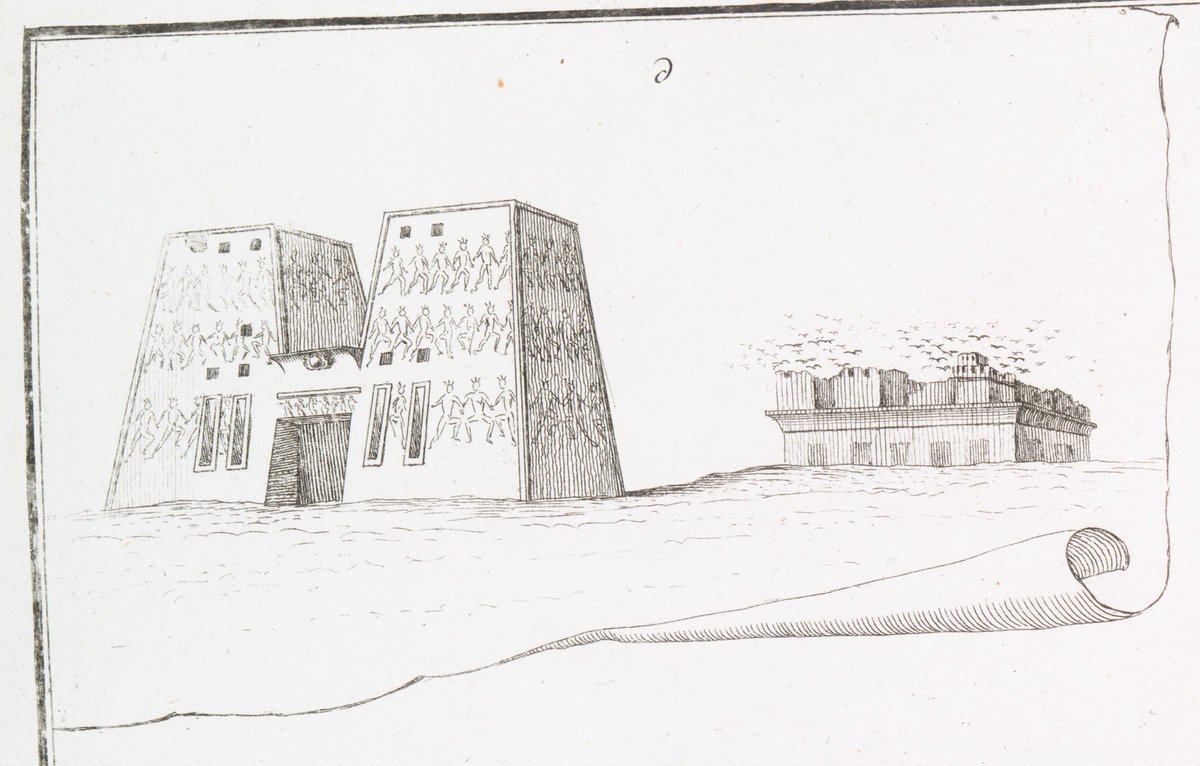
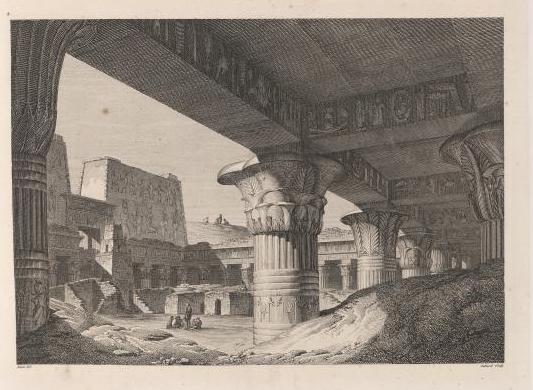
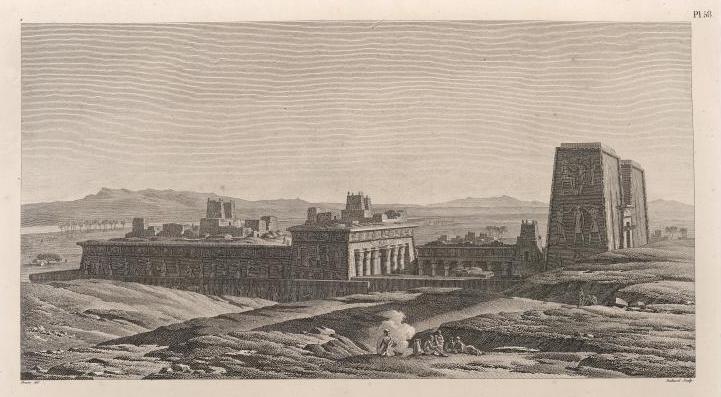
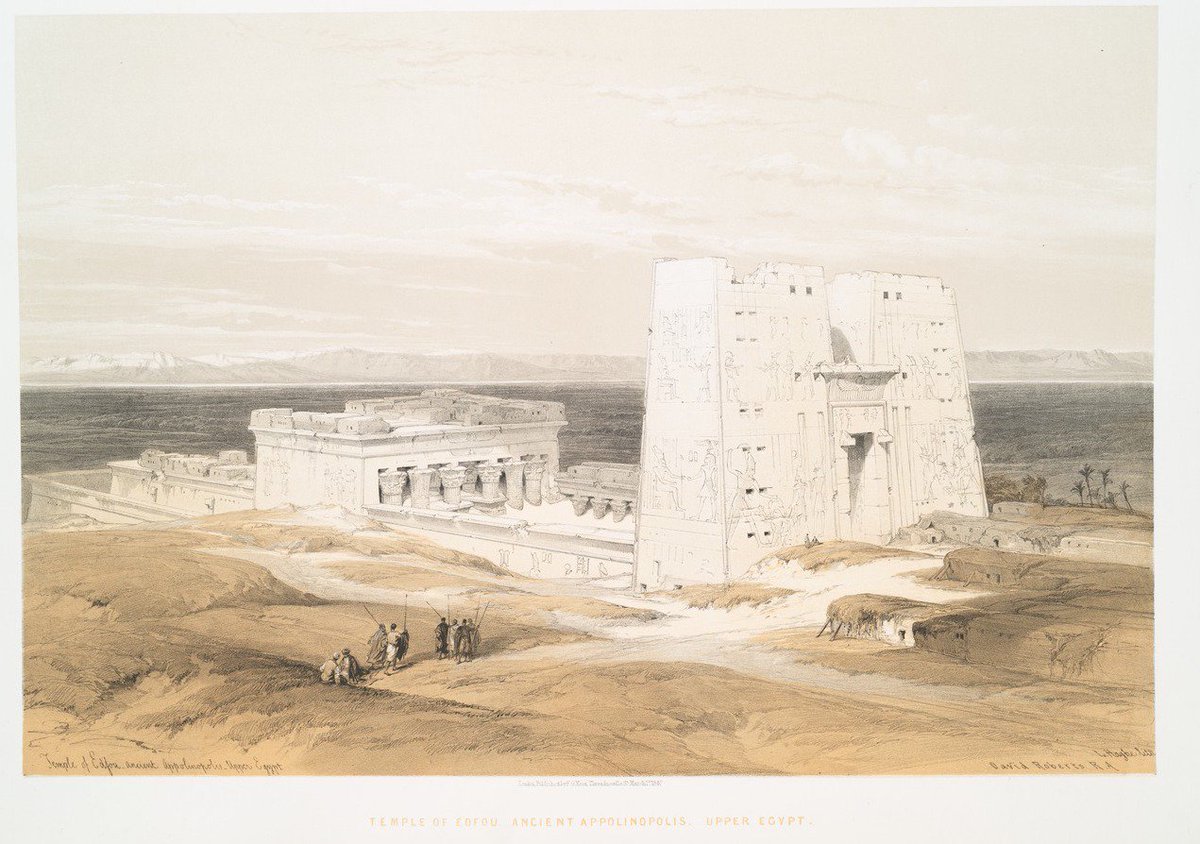
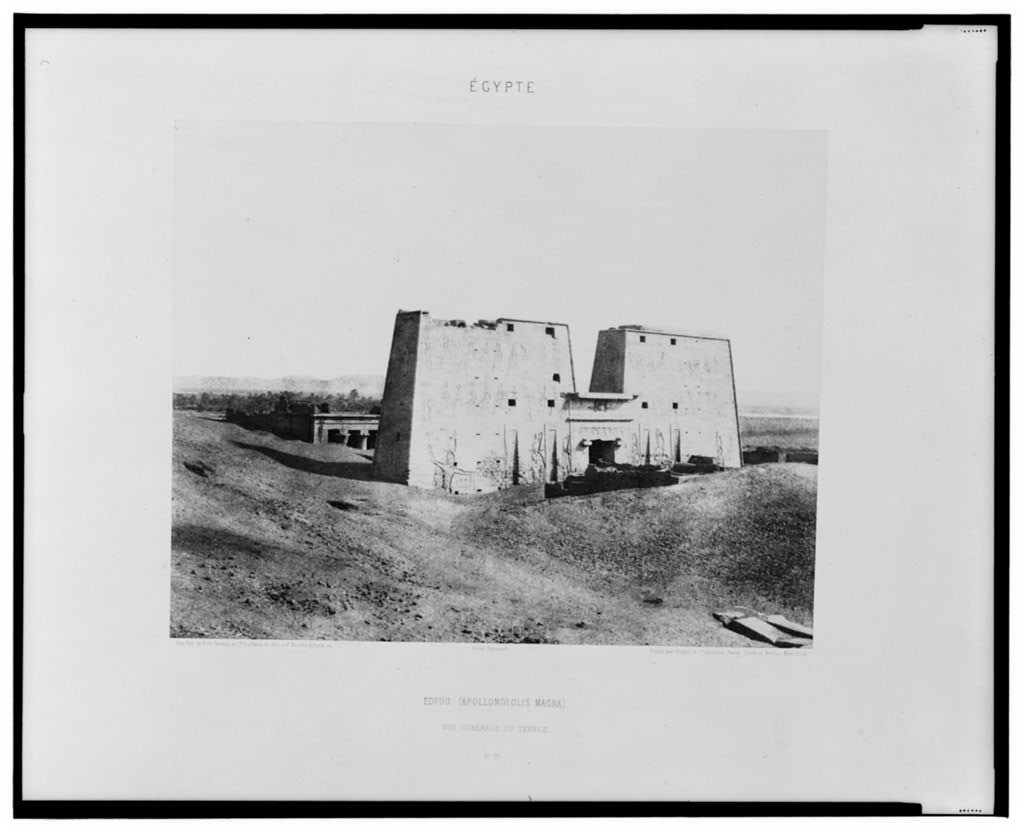
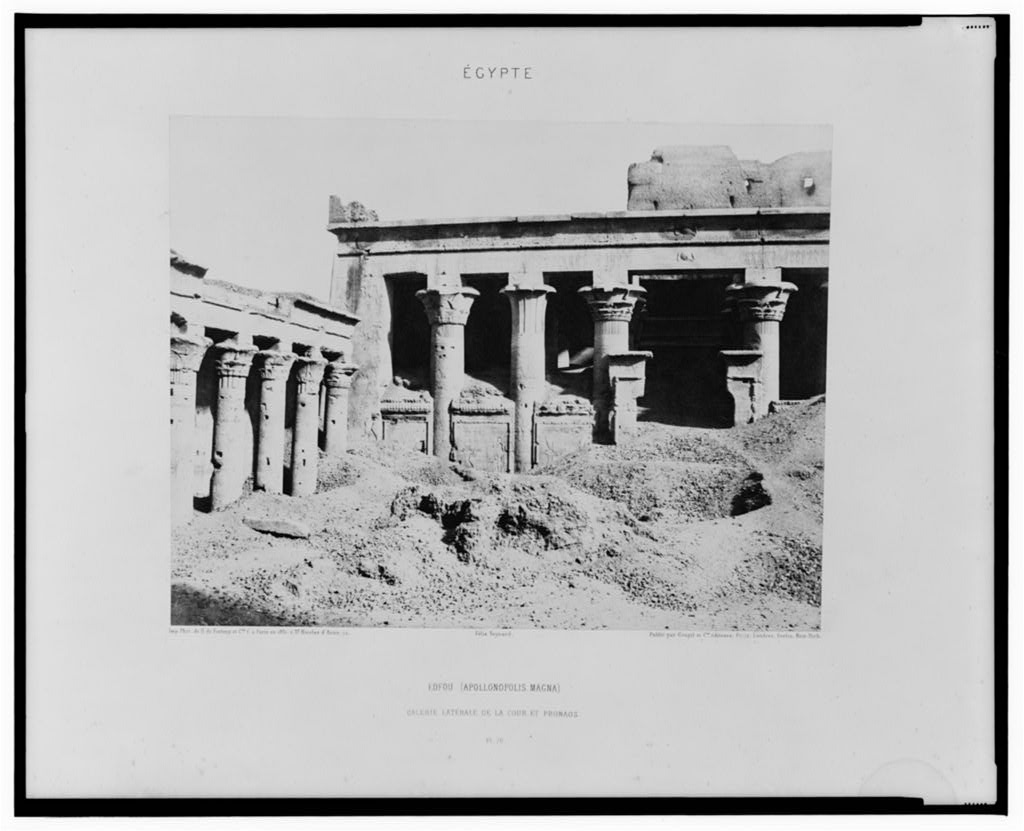

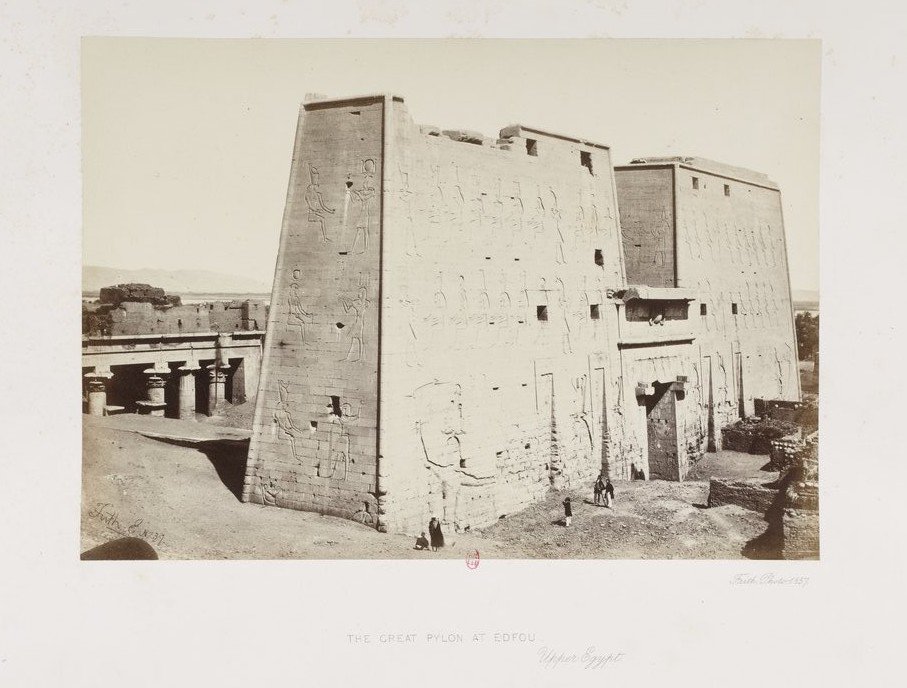
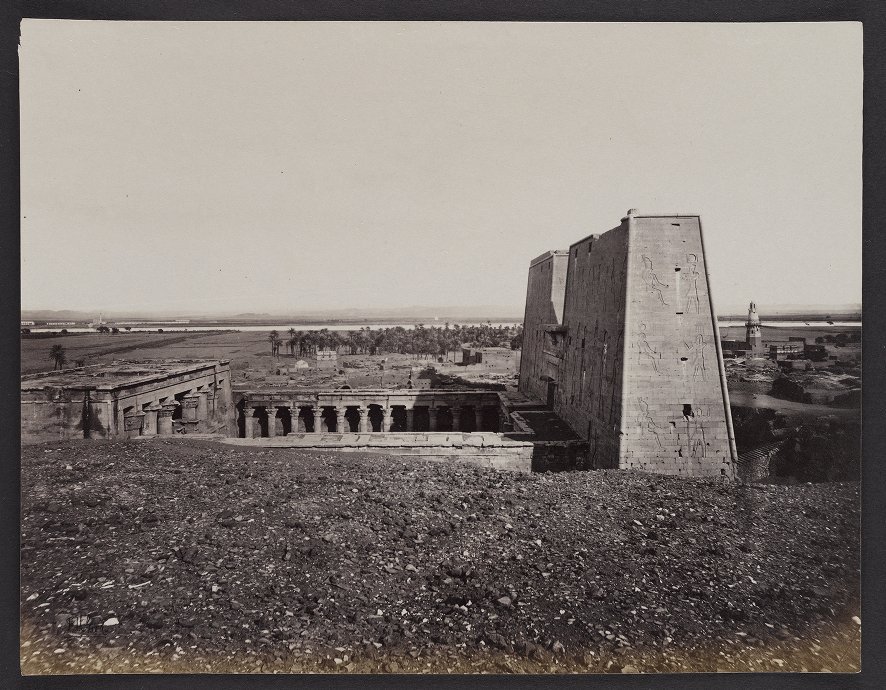
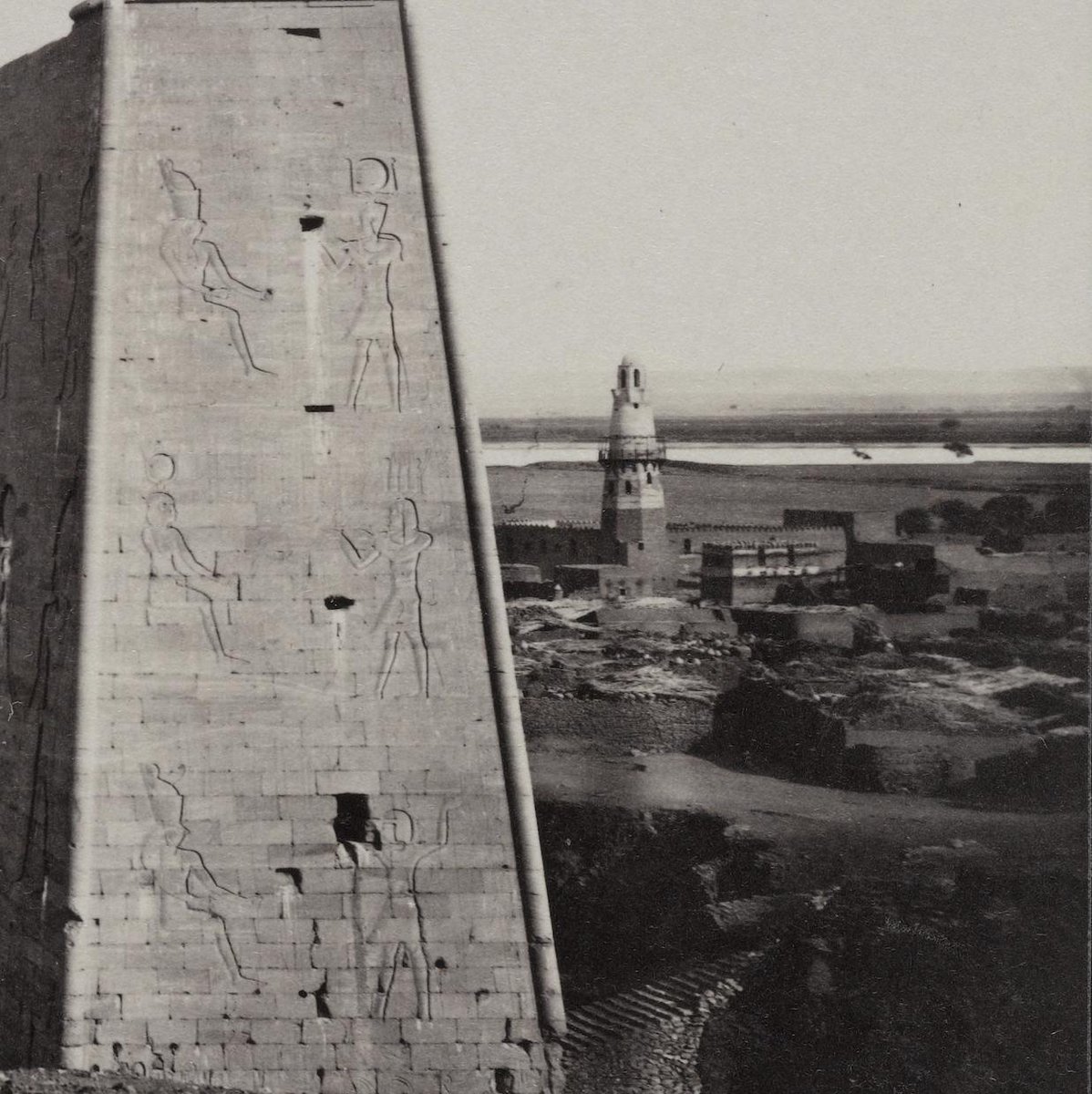
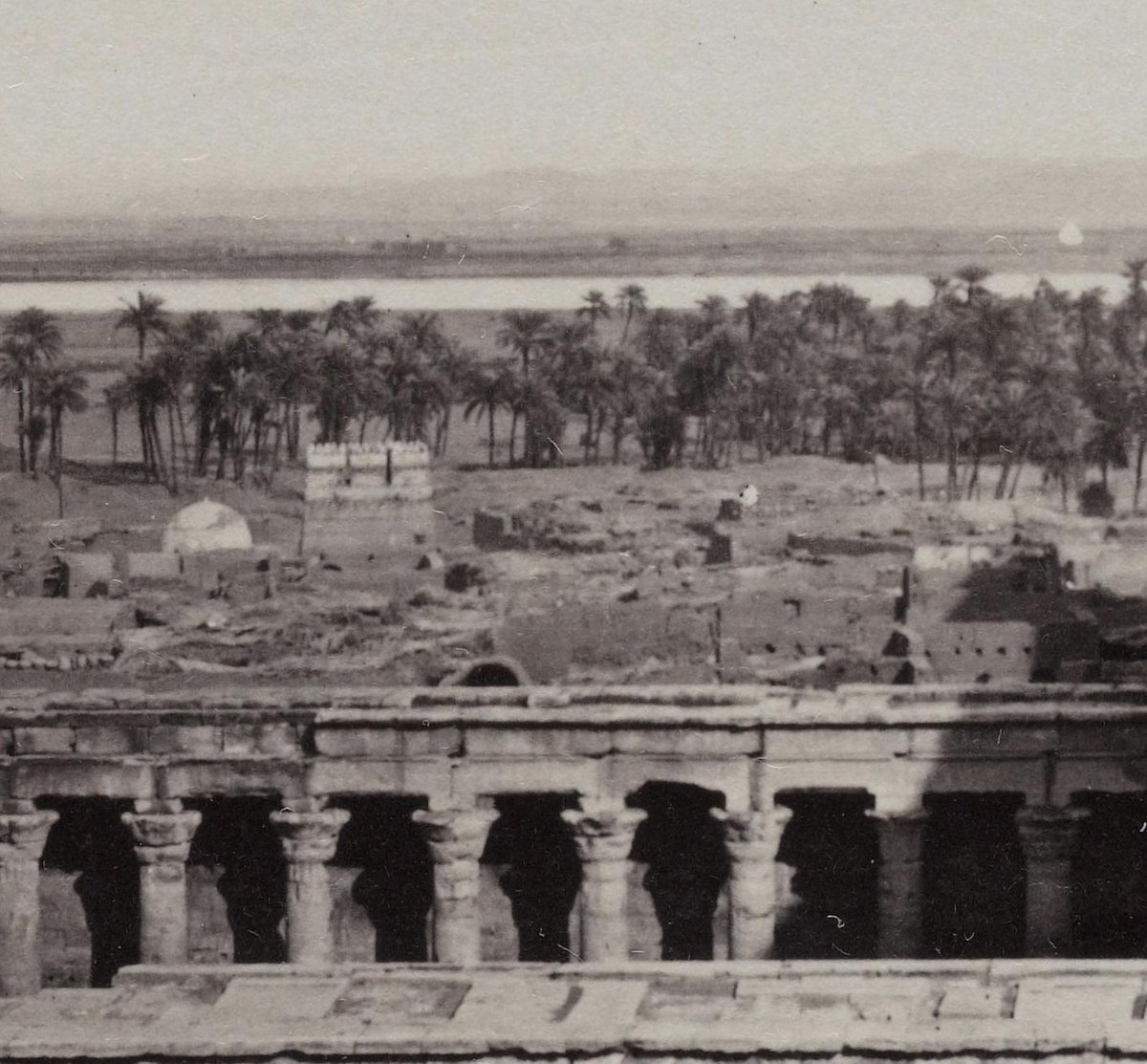
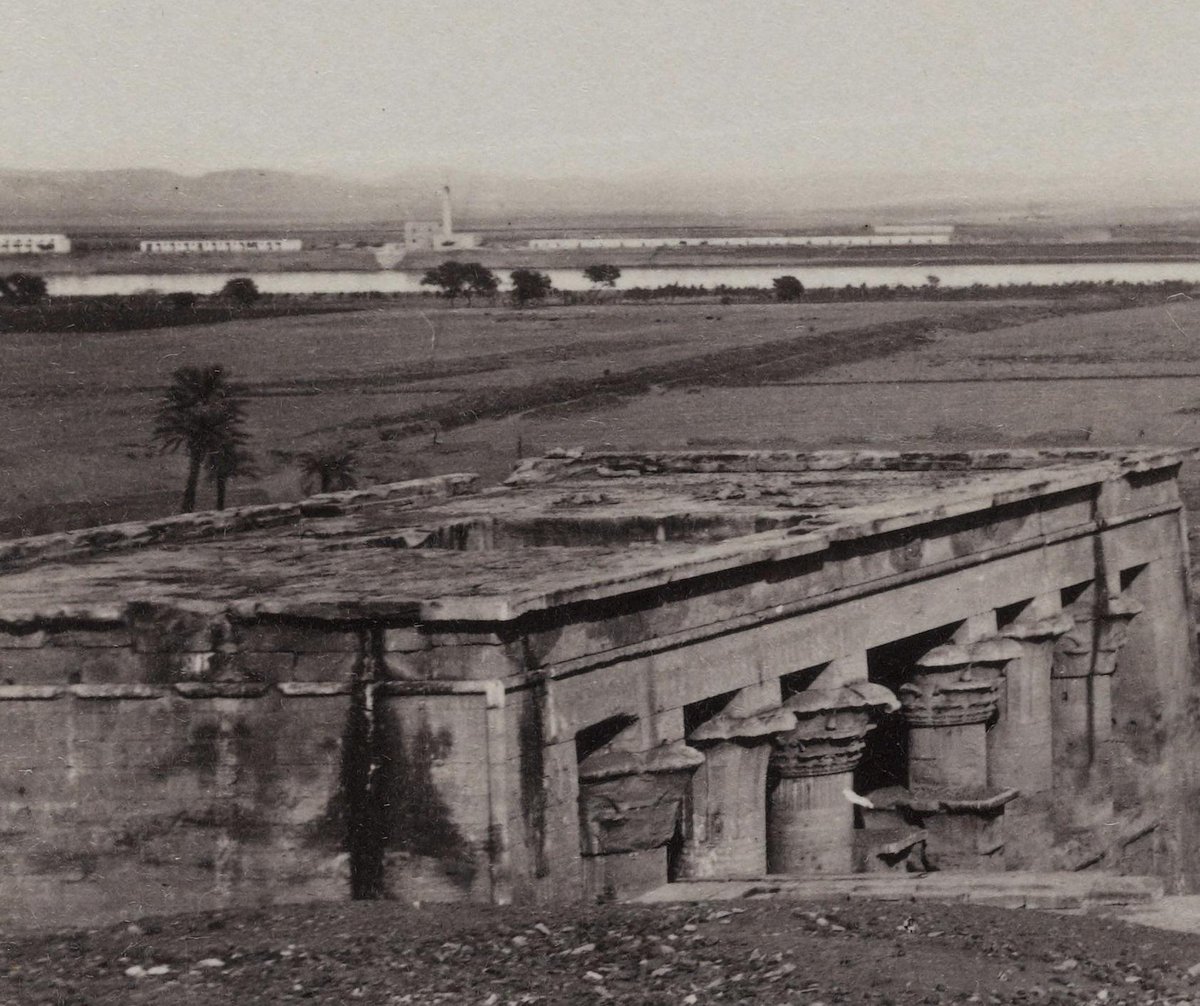
![What happened?The answer is apparently Auguste Mariette& #39;s excavations at the site in the early 1860s. Mariette cleared the temple and seems to have removed the houses from on top and inside of it in the process(Mariette, The Monuments of Upper Egypt, 1877 [1872]) What happened?The answer is apparently Auguste Mariette& #39;s excavations at the site in the early 1860s. Mariette cleared the temple and seems to have removed the houses from on top and inside of it in the process(Mariette, The Monuments of Upper Egypt, 1877 [1872])](https://pbs.twimg.com/media/D4cbzOSWAAA7vww.jpg)
![That& #39;s all Mariette says; but Gaston Maspero gives more details, talking about more recent Antiquities Service removals -- or from Mariette& #39;s day??(Maspero, Egypt: Ancient Sites and Modern Scenes, 1911 [written 1906]) That& #39;s all Mariette says; but Gaston Maspero gives more details, talking about more recent Antiquities Service removals -- or from Mariette& #39;s day??(Maspero, Egypt: Ancient Sites and Modern Scenes, 1911 [written 1906])](https://pbs.twimg.com/media/D4cfGAMWAAA8KqX.jpg)
![That& #39;s all Mariette says; but Gaston Maspero gives more details, talking about more recent Antiquities Service removals -- or from Mariette& #39;s day??(Maspero, Egypt: Ancient Sites and Modern Scenes, 1911 [written 1906]) That& #39;s all Mariette says; but Gaston Maspero gives more details, talking about more recent Antiquities Service removals -- or from Mariette& #39;s day??(Maspero, Egypt: Ancient Sites and Modern Scenes, 1911 [written 1906])](https://pbs.twimg.com/media/D4cfQ2tWwAEFScj.jpg)
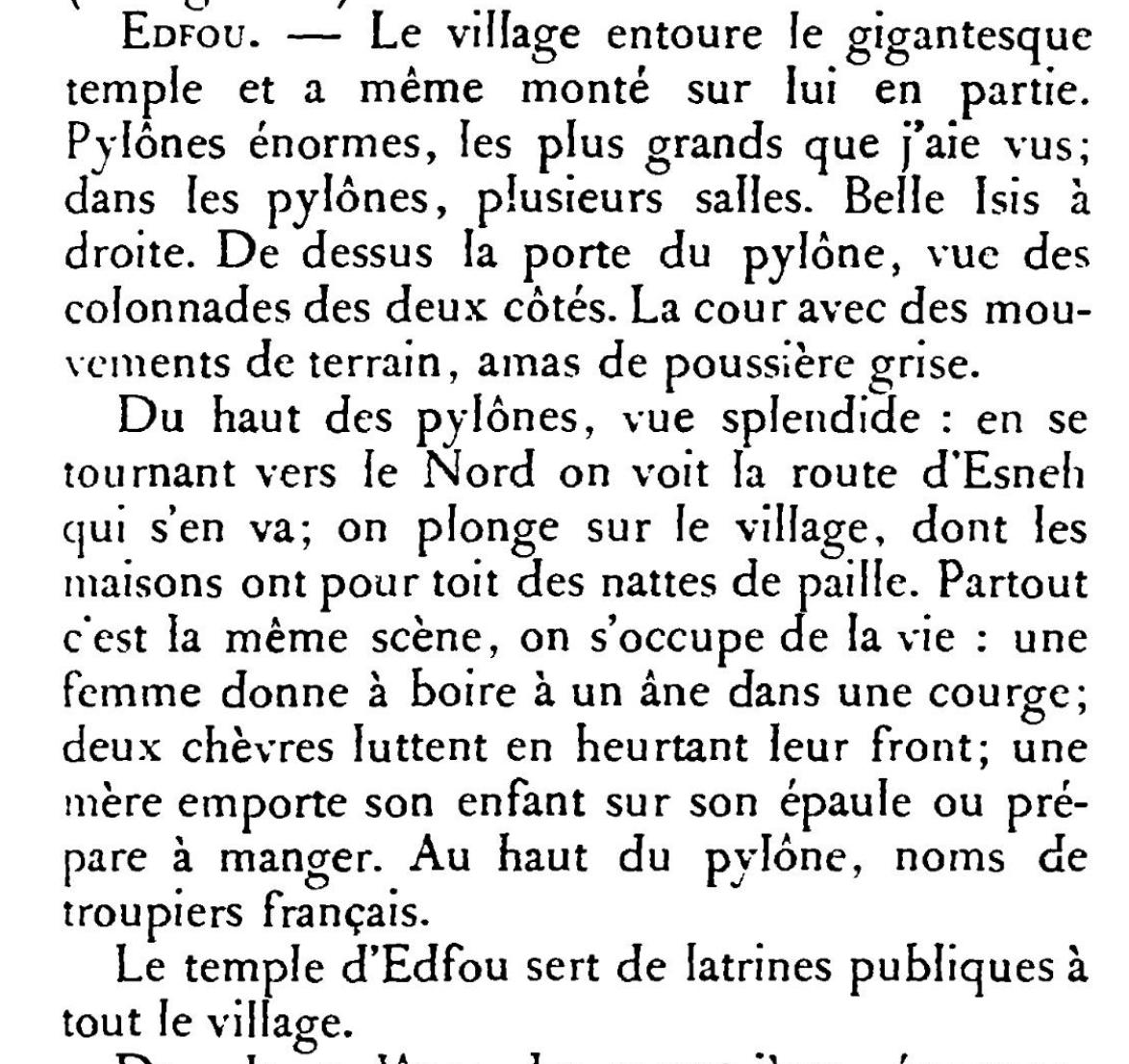
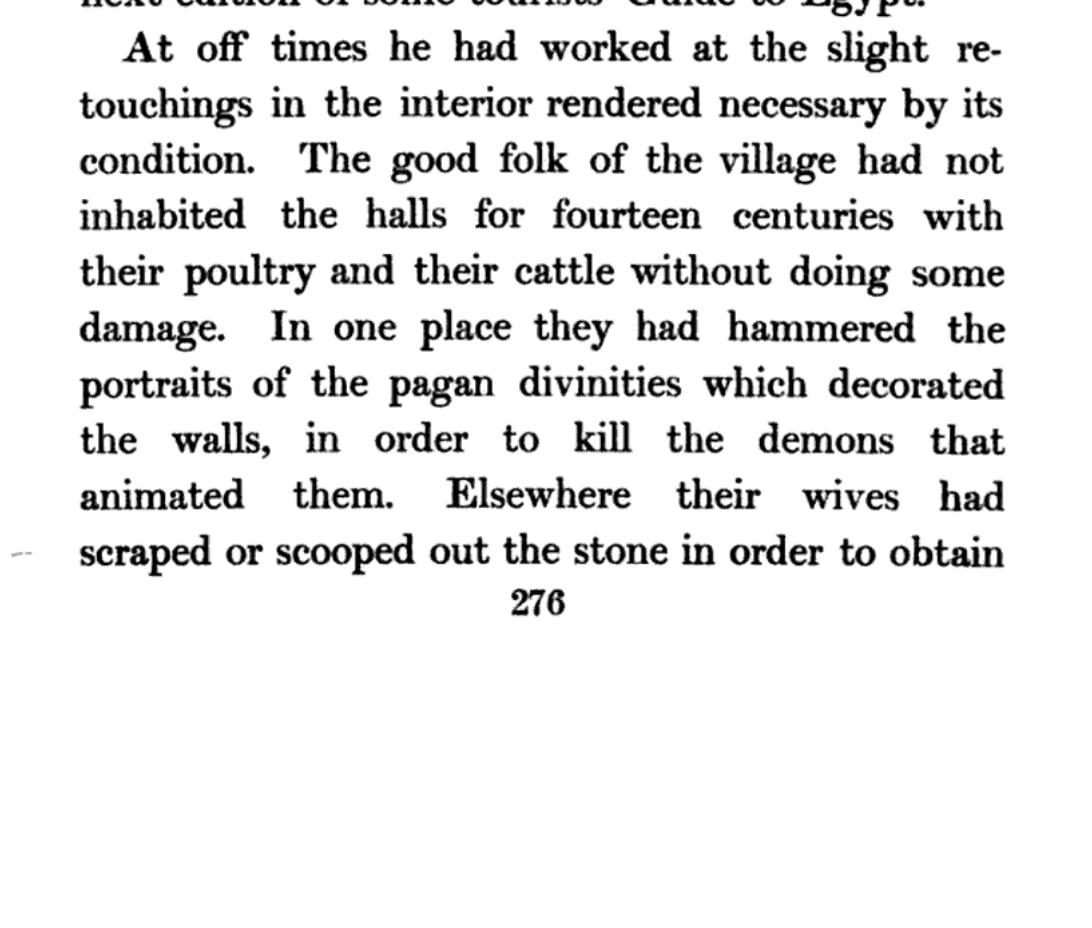
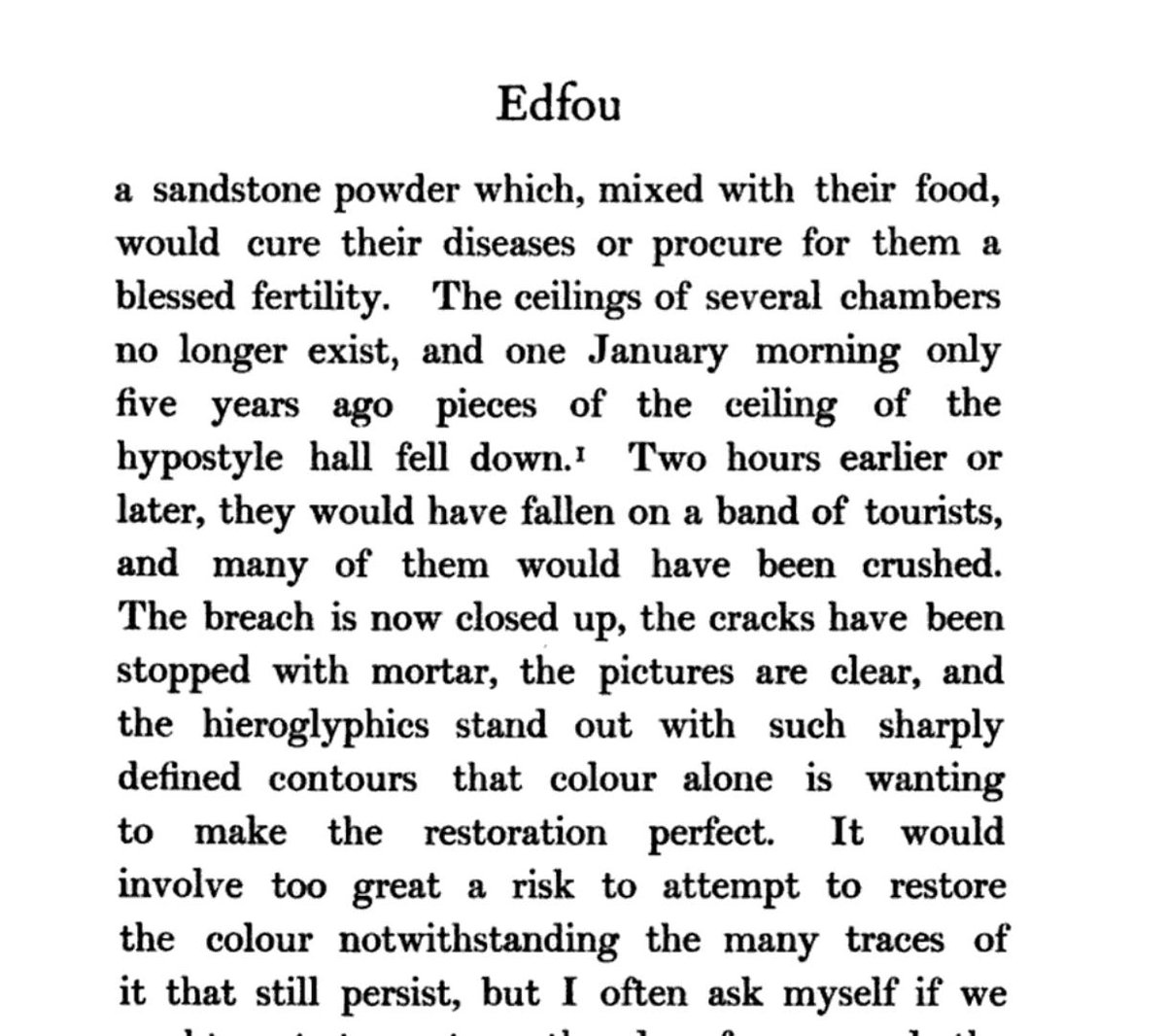
![Also: Mariette downplays the modern history of the site: he claims that "[a] few years ago, the modern village had invaded the temple . . ."When in fact we see it there from Norden& #39;s trip in 1737, and others (like Maspero) insist it was in the temple for 1400 years. Also: Mariette downplays the modern history of the site: he claims that "[a] few years ago, the modern village had invaded the temple . . ."When in fact we see it there from Norden& #39;s trip in 1737, and others (like Maspero) insist it was in the temple for 1400 years.](https://pbs.twimg.com/media/D4cjlvhX4AIuDmM.jpg)

